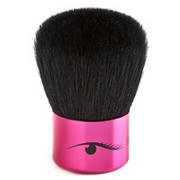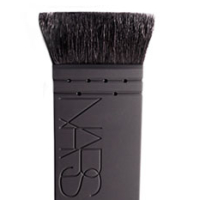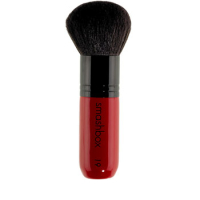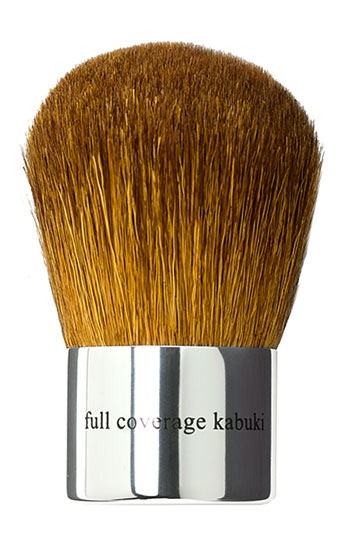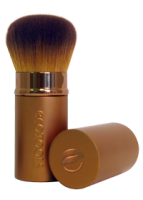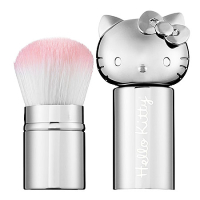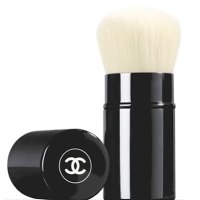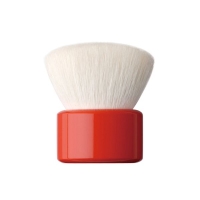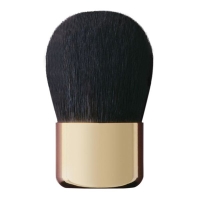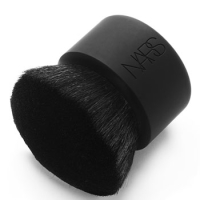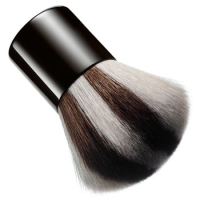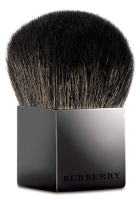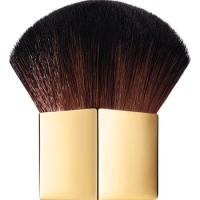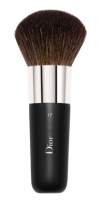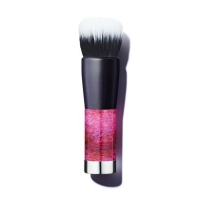So-called “kabuki” brushes have become pervasive in the cosmetics industry.

The earliest portrait of Izumo no Okuni, the founder of kabuki. In 1629, kabuki was banned for women “for being too erotic,” leading men to play all roles in the future, regardless of gender.
But if you shop around, you may find yourself wondering: What is a kabuki brush anyway?
Historically, it was easy to identify a kabuki brush by its distinctive appearance: A cosmetic brush that had a short stem, or ferrule, with a flat bottom that allowed the brush to sit upright on a flat surface, such as a table, and featured short, dense animal-hair bristles that were rounded in shape.
The brush is named after the Kabuki Japanese drama theater, where, ironically, male actors wear Keshō, a very heavy makeup made of white rice powder.
Today, however, the word “kabuki” is used to describe a variety of makeup brushes, whether they have squat or long handles, real or synthetic hair, or rounded or flat tops. Today, everything from the Nars Ita to the Sigma F80 to the very large Smashbox Face & Body Brush #19 are called a kabuki.
The common denominator is typically the length and density of the brush hair. Kabukis tend to feature a toe that is relatively short and tightly bound together. Although, even that is not always true.
A kabuki brush is used to apply, or rather buff, loose powdered make-up onto the face in a way that creates very natural looking coverage — even though the coverage from a kabuki brush tends to be medium-to-full.
Although the kabuki brush originated in Japan, credit to popularizing the kabuki brush in America has to go to bareEscentuals, which was purchased in 2010 by Shiseido for $1.7 billion. The San Francisco company revolutionized the cosmetics industry with the launch of its landmark bareMinerals makeup, which is best applied with a kabuki brush that often came with a starter set of the mineral makeup.
As mineral makeup became more popular, so, too, did the kabuki brush, and they are now promoted to apply a range of powder products, from mineral makeup and powder foundation to bronzers.
Kabuki brushes, especially of the retractable toss-it-in-your-bag variety, have become one of the most popular brush types on the market.
Incidentally, while you’ll find a bareMinerals kabuki brush in many women’s makeup stash, it’s not a very highly reviewed brush. Only 28% of reviewers at MakeupAlley.com say they would buy it again.
Choosing a Kabuki Brush
When buying a kabuki brush, there are a couple of things to consider.
If you’re going to toss it in your purse, you may want to consider a retractable kabuki brush and going down market for it — unless, of course, you like to impress people with your luxury goods when you touch up your makeup.
A brush like the very popular EcoTools Retractable Kabuki Brush gets high marks and is only $7.99. You can get a cuter retractable kabuki from Too Faced for $32, which gets mixed reviews but is still very popular. Or you can travel all the way up-market and show off with a $70 Chanel Retractable Kabuki Brush, although that brush is currently sold out.
But, honestly, if you’re ever going to splurge on a deliciously artful brush, a kabuki for your dressing table is the one to go cray-cray with. And when in Rome, you might want to do as the Romans do. Which is to say: Why not purchase a Japanese kabuki brush? You can find some beautiful ones at Hakuhodo’s US website. And, yes, they are expensive. (We did say splurge!)
Might we recommend the very beautiful, vermilion Hakuhodo Kinoko, which sells for $96. Or, perhaps the medium-sized Kinoko in gold, for $120.
If you don’t want to go all-out like that, you can find some very beautiful high-end kabuki brushes made by Burberry, Aerin, Nars, Chantecaille, or Dior.
But quite frankly, even Sonia Kashuk has some cute kabukis for under $20.
Wouldn’t one of these look lovely on your dresser? Which one matches your style?
Even More Information about Kabuki Brushes
- Sonia at Sweet Makeup Temptations picks her favorite kabukis
- The Non-Blonde Review of the Smashbox #19 Face & Body Brush
- The Non-Blonde Review of the Hakuhodo Kinoko
- Sigma F80 Flat Top Kabuki Brush Review
- Nars Ita Kabuki Brush Review
- Nars Botan Kabuki Brush Review
- Kabuki Reviews at MakeupAlley.com

